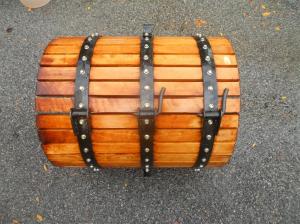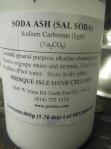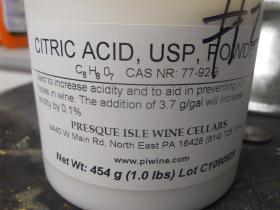We have already covered:
Step 1: The Equipment: Getting Started
Step 2: Grape Selection
Today we’ll discuss SANITIZING.
It is MOST IMPORTANT to keep everything that comes in contact with your wine EXTREMELY CLEAN. This single point cannot be stressed enough. This is especially critical when cleaning the fermenting vessels. You don’t need to sterilize, as it is impossible to keep things sterile.
Clean first, and then sanitize the press, crusher, fermentation vats, carboys, destemmer, and anything that will come in contact with the grapes, must, or wine during all phases of the wine making process. It cannot be stressed enough how important cleanliness and sanitation are. Taking shortcuts here will undoubtedly, sooner or later, ruin an entire batch of wine. All of the time, money and labor you’ve invested up to that point will have been wasted.
BASIC SANITATION RULES:
Here are some basic rules for maintaining a sanitized winery.
- Keep the winery clean and free of refuse both inside and out.
- Inspect the winery premises, the equipment and the cooperage at least once each month.
- Keep all equipment clean and in good working condition. Equipment should be arranged in an orderly way and the work areas kept free of clutter.
- Use plenty of clean hot water, sterilizing materials and cleaning agents, and the winery should be cleaned on a regular basis.
- Get rid of harmful bacteria, yeast, mold, insects and rodents. Then take any measures necessary to prevent a recurrence of these pests.
CLEANING:
The first step in the process is ensuring that the equipment is clean. All new equipment should always be cleaned prior to sanitizing. It should also be cleaned up after each use. Simply rinsing out equipment after use does not always remove all the organic material. If you don’t clean your equipment after using it, you will likely find mold growing in it the next time you pull it out to make a batch of wine.
Cleaning instructions using Soda Ash and Citric Acid:
Step 1: Soda Ash
Use 3 tablespoons Soda Ash dissolved in 1 gallon of HOT water to clean everything. Run the same solution through all of your carboys (from container to container). Brush clean and then discard the solution and rinse with plain water.
Step 2: Citric Acid
Follow the same instructions as used for Soda Ash.
Step 3: META (Kills bacteria)
Finally, dissolve 4 tablespoons of META in 1 gallon of water. Swirl this solution through all of your carboys, bottles etc. and rinse thoroughly.
Check back soon for the next stage in Wine-Making when the real fun begins…We’ll sort through the grapes and give you an old school demonstration on stomping!
Thanks for stopping by!
Gio
~
© Giovanni Cucullo 2011






